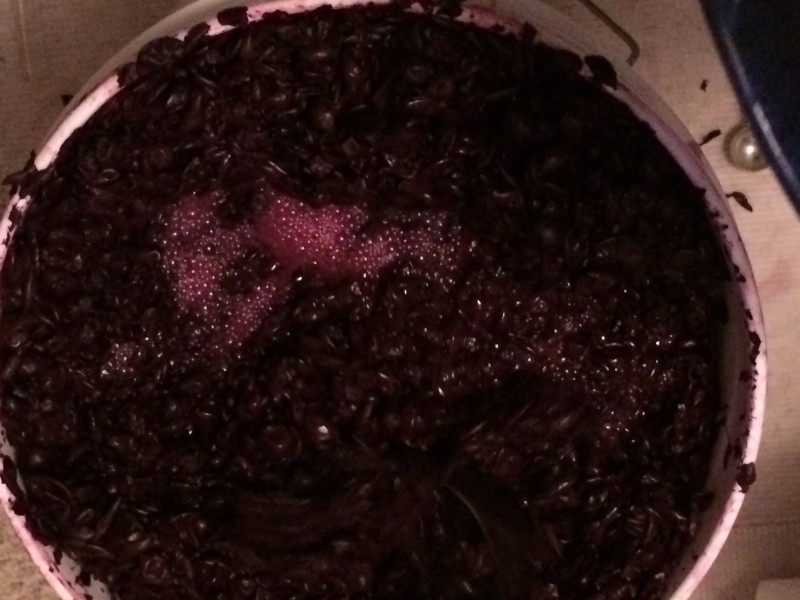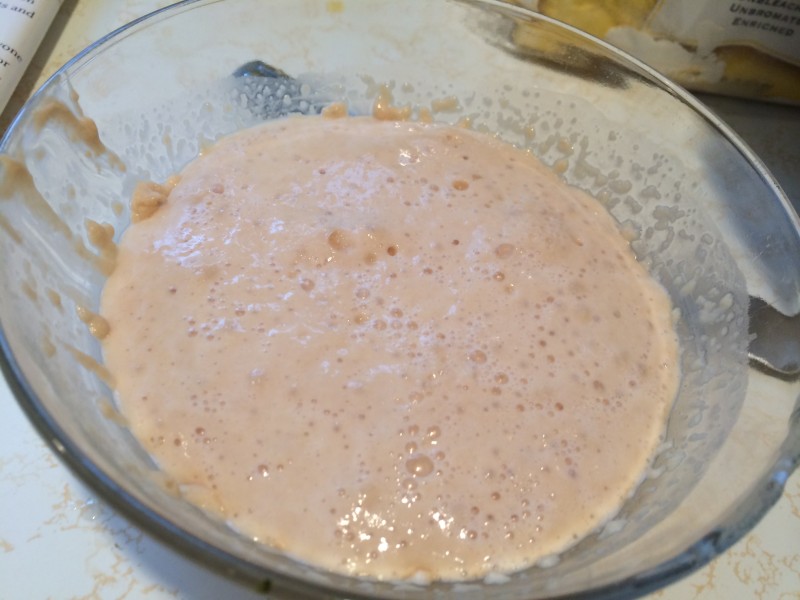 A yeasty smell emanates from the lower level of my house. It’s heavy and warm, both sweet and sour. It reminds me of my son when he was a baby — the smell of his neck on a hot summer’s day, a little…fermented.
A yeasty smell emanates from the lower level of my house. It’s heavy and warm, both sweet and sour. It reminds me of my son when he was a baby — the smell of his neck on a hot summer’s day, a little…fermented.
Fermentation is what’s going on in the dark of my basement. My husband, Avrom, has decided to make wine. Other men his age get into cars, or bikes, or maybe younger women. He does the bike thing, and I don’t think a Saab really counts as a mid-life crisis car, unless you are an academic (he is), so wine definitely beats a young blonde from my perspective, as mid-life crises go.
He had once discussed making cheese, but this might have, on the extreme end, involved a small, bleating goat tied to a post. Neighbors are not going to complain about wine, especially if you share it with them. Goats munching on their hydrangeas is another thing altogether.
Wine for Avrom, who is by training a yeast geneticist, is the perfect marriage of profession and pleasure. He enjoys buying and drinking wine, and not only remembers the tastes, years, vineyards and labels, but also when we last drank this or that particular bottle, what was the occasion and who was present. The science side involves him measuring the sugar levels and watching carefully over the days as they segue from sugar to alcohol. He needs to know when to add bacteria as well as yeast, and when to press the juice from the skins, transferring the liquid to anaerobic bottles to continue its journey from sugary juice to alcoholic beverage.
This sounds a lot more clinical than it actually has been. It seems to have involved a lot of pushing grape sludge around and waiting for it to rise in buckets on its own gas emissions as it bubbles pinkish froth.
I love to cook, and enjoy what a good glass of wine can bring to a well-wrought meal. But I can’t remember from Shabbat to Shabbat when we last drank a particular pinot noir, or what we ate with the Chateauneuf du Pape. Avrom can.
That smell of yeast that hits me when I entered the house each evening during the early stages of producing Chateau CapCo (or Maison Marcia, we haven’t decided what to call our label yet) which won’t be ready until sometime next year, is strong and lively. It brought to mind the things that rise when you add those tiny, dried organisms to the process. The smell reminds me of the mornings when I arrive at the Rockland Jewish Community Campus and can smell yeast in the air from Rockland Bakery, just under a mile away.
Flour and grapes, when you just add yeast, transform not just into bread and wine, but become those essential foods that we, as Jews, bless. By adding something alive to the mix, you end up with a product that might be something more. Perhaps just a little bit holy.
Challah and wine. Wine and challah. They are fundamental components of almost every Jewish celebration. We bless them, thanking God for bringing forth bread from the earth and for creating the fruit of the vine, hamotzi lechem min haaretz, borei pri hagafen.
 Bread is essential. It represents the fundamental food, and back when we all had a stake in actually producing our food, it represented the hard labor and effort that went into bringing it from seed to plant to ground flour to table. We salt our challah to remind us that it was produced with the “sweat of our brow.” And we set torn pieces of it on a plate and not into our guests’ hands to remind us that it is not man who is responsible for its presence, but God.
Bread is essential. It represents the fundamental food, and back when we all had a stake in actually producing our food, it represented the hard labor and effort that went into bringing it from seed to plant to ground flour to table. We salt our challah to remind us that it was produced with the “sweat of our brow.” And we set torn pieces of it on a plate and not into our guests’ hands to remind us that it is not man who is responsible for its presence, but God.
Wine has been part of Jewish culture since the start. All cultures that arose along the Mediterranean produced and drank wine on daily basis. It became part of ritual, and the Greeks and Romans paid homage to the God Dionysus or Bacchus.
Wine is first mentioned in the Torah in Bereshit. Noah plants the first vineyard and becomes drunk, although I suspect some time must elapse between those two acts, judging by what’s going on in my basement. The first mention of bread that I can find is when Abraham greets the three men who will tell him that his wife, Sarah, will bear a son. As they arrive, Abraham offers to fetch a “morsel of bread.”
Both bread and wine were important in our earliest rituals. Twelve loaves of the “bread of display” or “showbread” were placed on a special table in the holy tabernacle. These were replaced on Shabbat with 12 new loaves. The old ones were given to the priests to eat inside the holy of holies.
Why these foods? Why bless them? The reasoning is circular. We bless them because it’s proscribed in Torah; they’re important because they were part of Temple rituals; they are part of Temple rituals because they were in the Torah. But there’s not real “why” attached. Like prime numbers,they’re not divisible by anything but themselves – the root of whatever it is we are getting at by blessing them.
Of course we bless many things, drink that isn’t wine, food that isn’t bread. But wine and bread make it to the center stage of our Shabbat and holiday meal. You know just from that they are special.
Wine and bread weave their way through our story. Nazarites took vows forswearing wine. Pesach is a holiday where we celebrate the very fact that the bread did not rise, and yeast and leaven have taken on metaphorical sense of those things we need to rid from our souls.
And Christians took our use of wine and bread and turned them into the body and blood of Christ. Clearly we were not the only people who set aside these foods as sacred. They just seemed to ramp things up to the next level, if you ask me.
I have no evidence, but I think in the magical realm of making food from ingredients, our Israelite forbears knew something was up when juice of grapes turned into something transcendent, when once you drank of it, something mystical could happen. And bread called the staff of life, is so very basic.
To both these things you add yeast, living organisms. Of course, now we know how much yeast and which strains produce what results. Back then, in our primitive pre-Hebraic days, airborne yeasts lived on the grapes and in the dough and began to do their work. Those things we bless, we blessed because in the eyes of our forebears, a magical transformation took place.
We may not have known it then, but it took living organisms to make that change. It wasn’t until the 1670s when Antonie van Leeuwonhoeuk invented the microscope, that we were even capable of understanding that life could exists that was not visible to the naked eye. There was no way before then of understanding the science behind bread and wine. But both substances rely on yeast and teem with living organisms that transform them and elevate them from the mundane to the sacred.
I feel reasonably confident when I knead my bread that it will rise. And watching Avrom make his wine, I’m pretty sure we’ll have something — maybe not a 2008 Chateau Margaux — very drinkable in the end.
But maybe that was not so obvious once upon a time. Wine and bread, we bless because at some level, we could only imagine that it took a greater power to transform them. And that power was something barring any other explanation, for which we had to give thanks.
